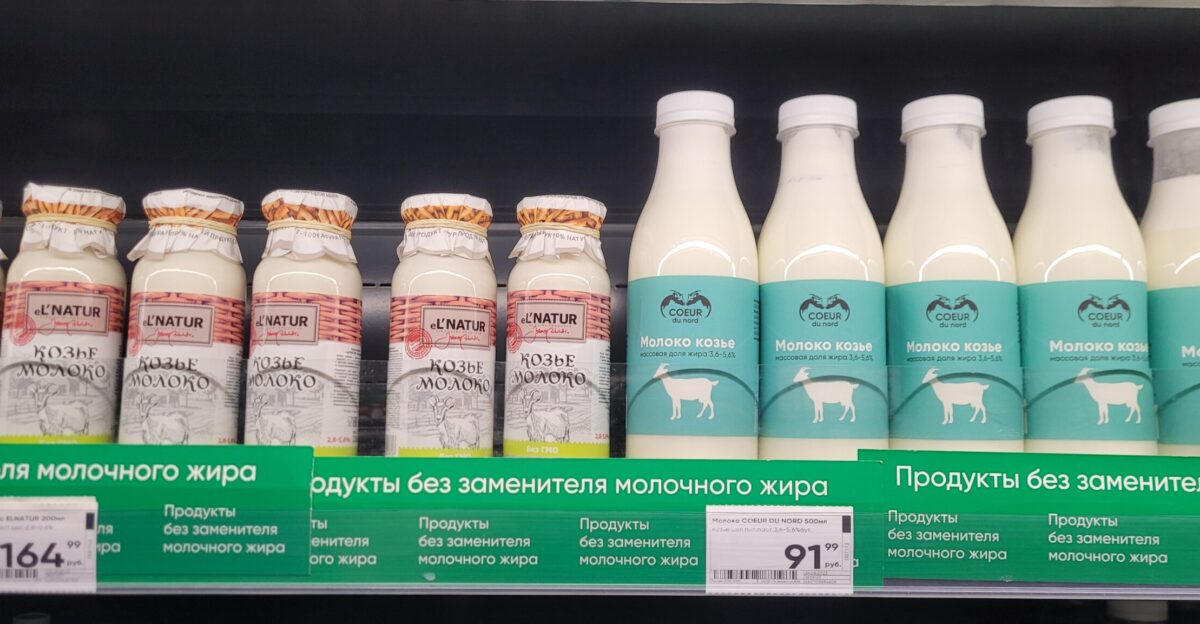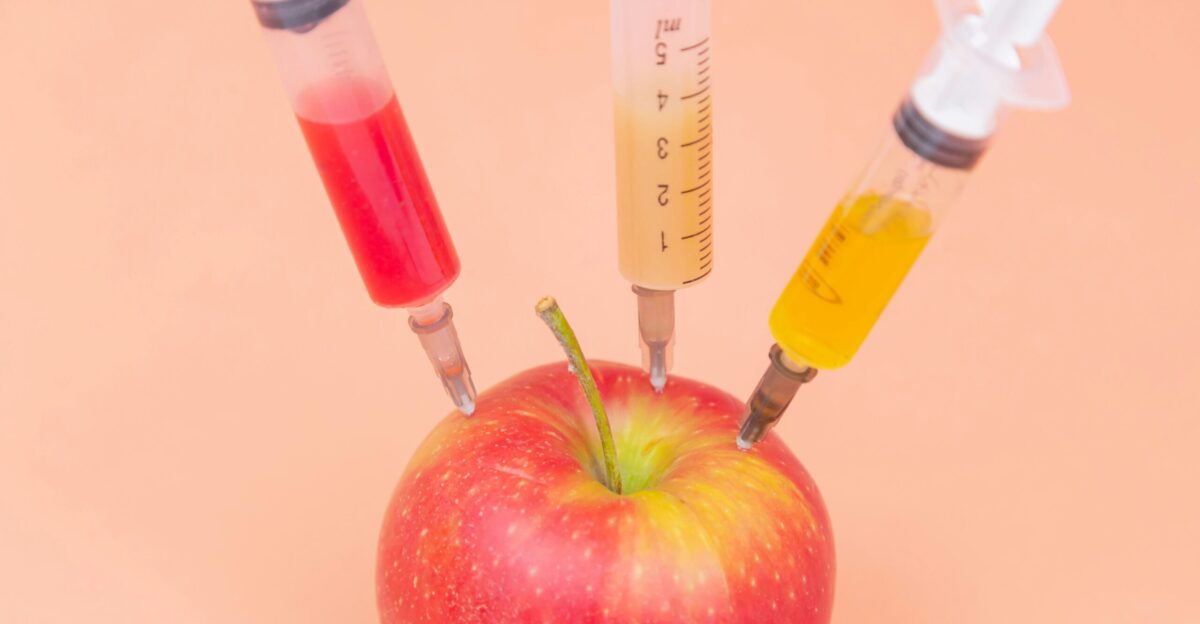
Federal regulators are scrapping scores of decades‑old “recipes” for foods in what industry observers call the biggest overhaul since the 1930s.
In a July 2025 announcement, the FDA moved to revoke or propose revoking 52 long-standing standards of identity – the detailed ingredient and production rules for canned fruits, cheeses, baked goods, noodles and more.
These rules date back to the Great Depression, when manufacturers once sold, for example, “jams containing little actual fruit”.
By rescinding them now, the agency says it is modernizing regulations, though some fear older consumer safeguards may disappear. (Every change is being made under rigorous review and citation-backed science.)
Trump’s Target

The Trump administration has pressed this agenda with new force. An executive order signed January 31, 2025, requires each agency to cut 10 existing rules for every new rule it issues.
The White House explicitly tied this 10-for-1 policy to undoing a “historic” $1.7 trillion of regulatory costs imposed under President Biden.
Agriculture and FDA officials say food standards are low-hanging fruit under this order.
Revoking obsolete food recipes generates credits against the cap on new rules, letting FDA pursue future goals while claiming compliance with the order. It also plays well with pro-business allies who view old food rules as needless bureaucracy.
Depression Era

These food rules have deep roots. Responding to 1930s frauds and shortages, Congress passed the 1938 Federal Food, Drug, and Cosmetic Act, empowering FDA to set “standards of identity” for foods.
Beginning in 1939, the agency enforced precise recipes (e.g. minimum fruit content in jams) “to promote honesty and fair dealing,” when food makers were skimping on ingredients.
For example, the original rules ensured that only genuine fruit preserves could be sold as “jam.”
These Depression‑era standards protected consumers from adulterated goods at a time when unregulated markets had failed to guarantee basic quality.
Recipe Revolution

The first batch of official food “recipes” covered tomato products. In 1939 FDA issued its very first standards for canned tomatoes, tomato purée and tomato paste.
In the decades that followed, regulators added hundreds more: everything from “milk chocolate” and “bread” to “peanut butter” and “ketchup” ended up with a legally defined formula.
Over time, more than 250 distinct standards of identity were codified, each prescribing allowable ingredients and methods. By the 1950s, items like flour, cereals, cheeses, eggs and dozens of other staples were bound to these rules.
These standards became a vast regulatory cookbook spanning most American processed foods.
The Big Announcement

On July 16, 2025, the FDA announced it would scrap 52 of those outdated food standards. The move covers canned fruit and vegetable mixes (many with saccharin), dozens of dairy and cheese items, plus bread, pasta and other goods.
HHS Secretary Robert F. Kennedy Jr. said flatly: “I’m eliminating outdated food regulations that no longer serve the interests of American families,” calling it “a crucial step…to remove regulations that have outlived their purpose”.
FDA Commissioner Marty Makary added that antiquated rules “are no longer serving to protect consumers” and that revoking them lets the agency use its resources more wisely.
The agency stressed these products are either off the market or already governed by modern labeling and safety laws, so consumers shouldn’t see immediate disruptions.
Saccharin Sunset

Some of the first rules to go are for goods Americans haven’t eaten in generations. Eleven specific standards for canned fruits and vegetables will be revoked outright on Sept. 22, 2025 – all for items “no longer sold in U.S. grocery stores”.
Seven of those cover fruits canned with the artificial sweetener saccharin (apricots, pears, peaches, etc.), a recipe no longer marketed.
The FDA notes that eliminating these saccharin-sweetened fruit standards imposes “zero benefits and zero costs to consumers or industry”.
An obsolete saccharin recipe disappears, clearing the books without touching any currently sold products.
Industry Celebration

Regulatory and industry leaders widely applauded the deletions. Commissioner Makary cheered the change: “Antiquated food standards are no longer serving to protect consumers.
It is common sense to revoke them and move to a more judicious use of food standards and agency resources”. Secretary Kennedy echoed that sentiment, saying the cuts cut “bureaucratic red tape”.
Trade groups also liked the news. The International Dairy Foods Association said it “welcomes” the proposal, noting many affected products are niche or redundant.
IDFA pointed out that revoking these standards offers “more consistent interpretation and improved flexibility for producers”.
Dairy Dilemma

Dairy is a prime example of the old rigidity. Fully one-third of all U.S. food identity standards cover dairy items – from cheese to ice cream.
Under current law, cheddar must have at least 50% fat and no more than 39% moisture; Colby cheese can be raw-milk (with age), but Monterey Jack must use pasteurized milk.
Industry critics say those inflexible formulas hold back new products and confuse producers.
IDFA’s spokesperson noted that some proposed revocations target “niche dairy products with little to no presence” while others simply remove needless restrictions, giving makers breathing room. By dropping such outdated rules, small creameries and large dairies alike hope to experiment without fear of misbranding.
Innovation Imprisonment

Advocates of modern rules argue that today’s nutrition labels and food-safety laws already keep manufacturers honest.
Experts say, strict identity standards now often “stifle innovation” – forcing startups into outdated recipes and preventing recipe tweaks that could reduce fat, sugar or allergens.
FDA itself has acknowledged that many old standards “may even stifle innovation in making food easier to produce or providing consumers healthier choices”.
Requiring century-old formulas can trap companies in legacy techniques, whereas freer rules could spur development of, say, high-fiber pastas or additive-free jams that today’s SOIs don’t explicitly allow.
Hidden Impact

For now, the remaining 41 identity rules are just proposed for revocation. These won’t take effect until after a public comment period closes Sept. 15, 2025.
The list includes many ultra-niche items. Among them are specialty cheeses – like Norwegian gamalost or Danish samsoe – plus Caciocavallo and other rare varieties.
Also slated for the chopping block are obscure pastas and noodle formulas, certain canned juices, flavored dairy treats (e.g. goat’s milk ice cream) and even colored lemonade concentrates.
As the FDA notes, many were withdrawn simply because “little to no market presence” exists.
Modernization Struggle

This overhaul follows years of false starts. FDA has known since at least 1995 that standards needed updating. The agency issued a broad proposed rule in 2005 to set modern principles, but it was never finalized.
Subsequent efforts – including public meetings in 2018 and 2019 and another attempt to revive the 2005 proposal in 2020 – also stalled.
Each time, entrenched interests and resource limits left the mid-century rules intact. By 2025, technology and tastes had clearly outpaced the legal recipe book.
The recent purge of 52 standards is thus the first breakthrough in a generation of missed opportunities.
Leadership Shift

The revocation initiative reflects the new FDA-HHS leadership team’s priorities. Commissioner Makary, an elected surgeon from Johns Hopkins, has voiced free-market views and a penchant for cutting rules.
HHS Secretary Kennedy, once a long-shot presidential candidate, has made slashing “unnecessary” health regulations a top goal.
Together, they signal a stark policy break. Unlike most previous FDA chiefs, Makary openly counts regulatory reductions as successes.
Under their watch, the Trump administration’s aggressive deregulatory stance is driving food policy – prioritizing business flexibility over adherence to century-old standards.
Strategic Calculation

There is a broader political logic to the timing. By erasing 52 standards at once, the FDA scores a windfall of regulatory “credit” under the 10-for-1 order.
Each eliminated standard represents room for future rule-making. Some analysts note this frees up the agency to consider new initiatives (perhaps on novel foods or health claims) without technically exceeding the Trump cost-cutting targets.
The administration can promise innovation-friendly reforms to food makers while counting those older rules as already slashed.
The move thus fits neatly into a conservative agenda of deregulating established programs.
Expert Skepticism

Not everyone is convinced the trade‑off is worth it. Food safety advocates warn that even if labels disclose ingredients, having clear standards historically helped prevent fraud.
As FDA officials themselves noted, identity standards promoted uniformity and prevented “food fraud”. Without them, proving a product is misbranded may require more intensive testing or litigation.
Some public health experts caution that, although most foods will still be held “truthfully labeled” and safe, removing explicit composition rules could create gray areas.
In their view, standards provided a straightforward check on quality that no nutrition panel can fully replace.
Consumer Question

Will shoppers even notice these changes? In most cases, probably not. Popular items like plain yogurt, sliced bread, or canned corn won’t visibly change, since manufacturers aren’t racing to alter stable best-sellers overnight.
The food trade believes companies will quietly adjust recipes over time — perhaps adding more fiber here or using new milks there — without fanfare.
However, with no old standard to trigger enforcement, subtle reformulations might slip by unnoticed by consumers.
For now, marketing labels (ingredient lists, nutrition facts) remain rigorous, but it’s an open question whether shoppers will ever spot any difference, for better or worse.
Political Calculus

Politically, food standards were smart targets. By framing the rules as relics of the New Deal era, the administration puts itself on offense. Most Americans aren’t familiar with items like “acidified sour cream” or “colored lemonade,” so the cuts seem low-stakes.
The move wins applause from industry and libertarian commentators as trimming red tape.
It may also serve as a showpiece of Trump’s broader deregulatory narrative ahead of the 2028 campaign.
Critics argue it’s a symbolic gesture rather than a major public health reform. Either way, the timeline and fanfare suggest the White House views this as a political win as much as a policy one.
International Ripple

Foreign regulators are watching the U.S. closely. Many other countries maintain standards for these same foods (often influenced by old U.S. codes), so U.S. exporters may soon be free to alter products without violating FDA rules.
For example, if American cheese makers change recipes, their exports will still have to meet EU or Codex standards for cheese identity.
Trade analysts warn there could be hiccups if exporters take advantage of loosened rules and foreign regulators enforce traditional standards at ports.
The lack of U.S. standards could force negotiations on equivalency in food quality for global commerce.
Legal Landscape

Even without explicit identity rules, all producers still face general food laws. By law, foods must be safe, labels must be truthful, and marketing must not mislead.
Lawyers expect a wave of confusion as companies test new formulations. Some say more litigation is likely: courts may have to settle whether a revamped recipe runs afoul of misbranding statutes.
However, the consensus is that FDA’s existing safety and labeling requirements will still protect the public.
Only the recipe dictates are gone – non-standard foods simply revert to broad legal scrutiny rather than specific formula audits.
Cultural Shift

The policy shift also reflects changing consumer attitudes. Many Americans today trust ingredient lists and nutrition labels far more than historic, behind-the-scenes recipes.
Years of labeling reforms (from allergens to nutrition facts) have boosted transparency, so younger shoppers may hardly remember the old standards ever existed.
Polls suggest that health-conscious consumers focus on what’s in the food, not what could have been left out under a 1930s law.
Supporters argue, society has already moved away from blanket regulations toward empowered buyer choice.
Regulatory Future

FDA officials say this is just the beginning of a broad revision. They have pledged to review all 250+ remaining food standards and “promote flexibility” in reforming them.
In the end, the big question is not whether more standards fall, but how many.
Will decades-old rules for commonplace products vanish one by one, or will most quietly fade in the next few years?
Whatever comes next, Americans should expect to see their dinner tables shaped by market innovation more than by New Deal recipes – a profound regulatory change ushered in by these 20 slides.